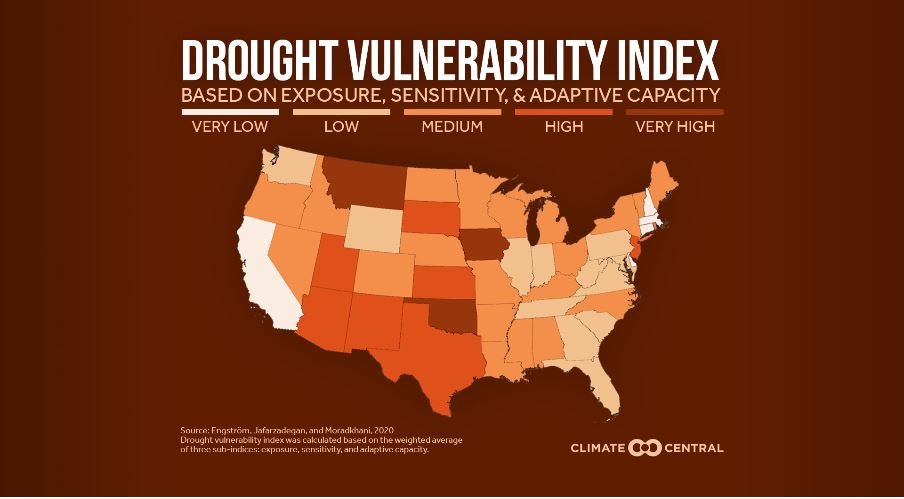Nancy Dugan lives in Altoona, Iowa and has worked as an online editor for the past 12 years.
While testifying before the Iowa Utilities Board on September 5, Summit Carbon Solutions chief operating officer James “Jimmy” Powell outlined the company’s need for large amounts of water at each of the sites identified as pipeline “partners” throughout the five-state route proposed for a CO2 pipeline. “We’ll need the water supply at every plant, so we’re working with individual plants,” he said. According to the Summit Carbon website, the pipeline would connect to thirteen ethanol plants in Iowa.
Online records from the Iowa Secretary of State’s office show that twelve Summit-affiliated LLCs filed Certificates of Authority as foreign limited liability companies on the afternoon of August 31. A thirteenth LLC, Saint Ansgar SCS Capture, LLC, filed an application for a Certificate of Authority on July 3, which was approved on the same day.
All are identified as member-managed firms formed in Delaware, and all share an address with Summit Carbon Solutions in Ames. SCS Carbon Removal, LLC is identified as the member or manager firm on all of the applications. Jess Vilsack, general counsel for Summit Carbon Solutions, signed for each of the LLCs.
Here are the thirteen LLCs, whose names appear to fit the naming convention adopted by Summit to designate potential well sites.

It is not clear whether any of these LLCs own assets or employ staff.
WATER NEEDED TO COOL CO2
During his September 5 testimony, Powell said water demand for each of the carbon capture projects will depend on the production volume at each facility. “They’ll range from 20 gallons a minute to 120 gallons a minute,” he added.
Powell explained how the water would be used. “As you increase the pressure on the CO2 to reach the dense phase, that product heats up. And so we’ll have a cooling system that circulates through that compression cycle that keeps the product cooler, and then we’ll dehydrate that in the later stages of compression. We’ll pull the water out of the stream in the later stages of compression.”
Powell also indicated that CO2 dehydration would occur at the capture facility, before the CO2 is injected into the pipeline. It is not clear what method will be used to dehydrate the CO2 before it is placed in the pipeline. Some facilities employ triethylene glycol, although other, less common methods may also be used. There are certain health concerns associated with triethylene glycol, including acute toxicity if ingested.
A map provided by the DNR for Goldfield SCS Capture, LLC, which is seeking to construct a well that will be located on or near property owned by Corn, LP in Wright county, indicates that the water will be discharged after use “to unnamed creek to Buttermilk creek.” The map also states, “pathway to outfall unknown/to be confirmed.” It is not known whether small amounts of CO2 could also be discharged following dehydration.
When asked if he would agree that this new potential draw on Iowa’s water resources might negatively impact surrounding users, Powell responded that Summit would depend on guidance from the Department of Natural Resources in Iowa and other states to confirm availability. He later stated, “There are other sources of water,” although he did not specify what those were.
Powell was also asked if he had knowledge of any regulations in Iowa that would establish a hierarchy of usage in the event of water shortages. He stated that he did not, indicating that Summit would abide by whatever conditions the DNR imposes on it. Iowa Code Section 455B.266 addresses priority allocations of water in the state after certain events.
WHO OWNS THE WELL?
As Bleeding Heartland previously reported, Lawler SCS Capture, LLC, one of myriad Summit Carbon LLCs, sought and received a well permit to be located on land owned by Homeland Energy Solutions in Chickasaw county. The Iowa DNR granted the permit on May 29.
A second permit application, however, has hit a snag. As mentioned above, Goldfield SCS Capture, LLC submitted its Water Use Permit Application to the DNR on August 26. On August 28, Sandra McGrath, RN, Wright County Health Department Administrator, sent an email to a Shawver Well Company representative, indicating that the permit identifies the owner of the well as Goldfield SCS Capture, LLC. “I show owners as Corn LP. Is there an agreement with Corn LP on this property?” McGrath asked.
Michael Anderson, senior environmental engineer with the DNR, provided the email to Bleeding Heartland. When asked on September 6 if he had heard back regarding the ownership question, Anderson responded, “No, not yet. Will need to be resolved before any final permit is issued.”
Anderson submitted a Notice of Intent to grant the Goldfield SCS Capture well permit to the Eagle Grove Eagle newspaper on September 6. It is slated to be published on September 13, with public comments accepted through October 4.
Bleeding Heartland asked Anderson if the same ownership issue is at play with the Lawler SCS Capture, LLC permit, which has already been granted. At this writing, he has not responded.
CARBON CAPTURE WOULD INCREASE WATER USE
A study published in the March 2021 issue of ScienceDirect documents the immense water footprint of carbon capture and storage technologies, explaining, “Large-scale deployment of carbon capture and storage could double the water footprint of humanity.”
Climate Central, a nonprofit comprised of independent scientists and communicators who research and report on climate change, ranked Iowa among the top three U.S. states most vulnerable to drought in a 2020 study. South Dakota ranked among the top five.

The median of 20 to 120 gallons of water per minute, Powell’s estimate of facility usage, is 70 gallons of water per minute. It is difficult to calculate with any precision just how much water Summit Carbon will use to capture CO2 at its thirteen partner ethanol plants in Iowa. Hypothetically, assuming thirteen plants are operational around the clock, 365 days a year, yields an estimated withdrawal rate of 478,296,000 gallons per year.
- 70 gallons of water per minute multiplied by the 13 ethanol plants in Iowa is equal to 910 gallons of water per minute.
- 910 gallons of water per minute multiplied by 1,440 (the number of minutes in a day) is equal to 1,310,400 gallons of water per day.
- 1,310,400 gallons of water per day multiplied by 365 (the number of days in a year) is equal to 478,296,000 gallons of water per year.
Certainly not all of these plants will be operational 24/7, 365 days a year, indicating the figures above are overestimates. But when factoring Bruce Rastetter’s remarks at an American Carbon Alliance event on August 14, these figures may be low. That’s because, according to the University of Illinois Extension, it takes approximately three gallons of water to make one gallon of ethanol, and Rastetter is predicting major expansions in ethanol plants that have signed on to the pipeline. If any of these ethanol plants also begin to produce sustainable aviation fuel, water usage will likely rise even further.
We’re in a competition with electric vehicles, and we have to lower the carbon footprint, work with the oil and gas industry to maintain the combustion engine, and the reality is, every one of our plants that’s signed up with us has engineering plans being drawn up today to grow by 25 percent.
In October 2022, the Iowa Utilities Board denied a request to conduct an environmental impact study on the potential effects of the proposed Summit Carbon pipeline. The ruling stated in part: “As found by the Board in the Dakota Access docket, the Board does not consider a separate EIS beyond the statutory requirements in Iowa Code chapter 479B to be necessary.”
Top image of corn field affected by drought is by user Here, available via Shutterstock.


2 Comments
Iowa is part of the carbon economy alliance against electrification and it's a bipartisan effort...
good thing the region isn’t facing any droughts/water-shortages, yer doing G_d’s work Nancy if only Dems from the federal government down to the local level weren’t in on the extraction shell-game we might at least be able to put up a fight they would notice.
dirkiniowacity Tue 12 Sep 2:21 PM
I think of the hard-working smart young Iowans I know who deeply care about Iowa's landscape and resources....
…when I need to lower my blood pressure a little after reading Nancy Dugan’s latest. Thank you again for your good work, Nancy. Iowa is lucky to have you.
PrairieFan Fri 15 Sep 11:29 PM